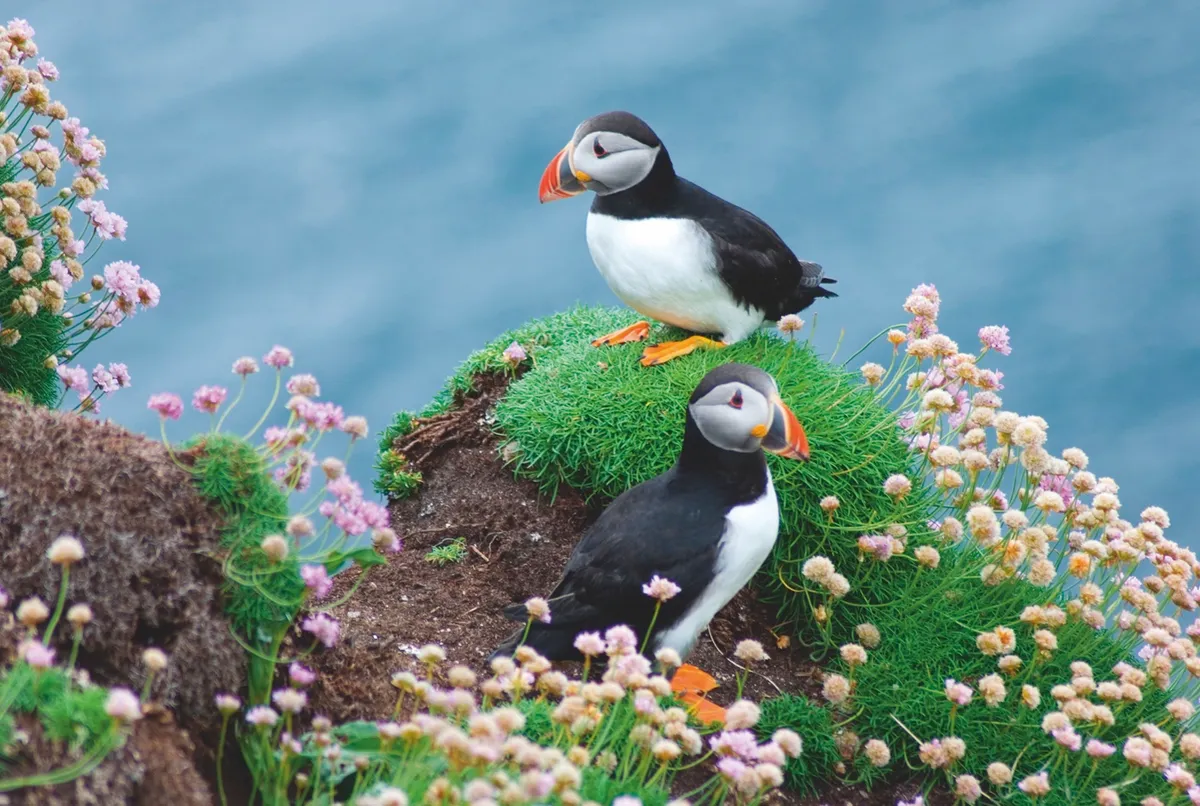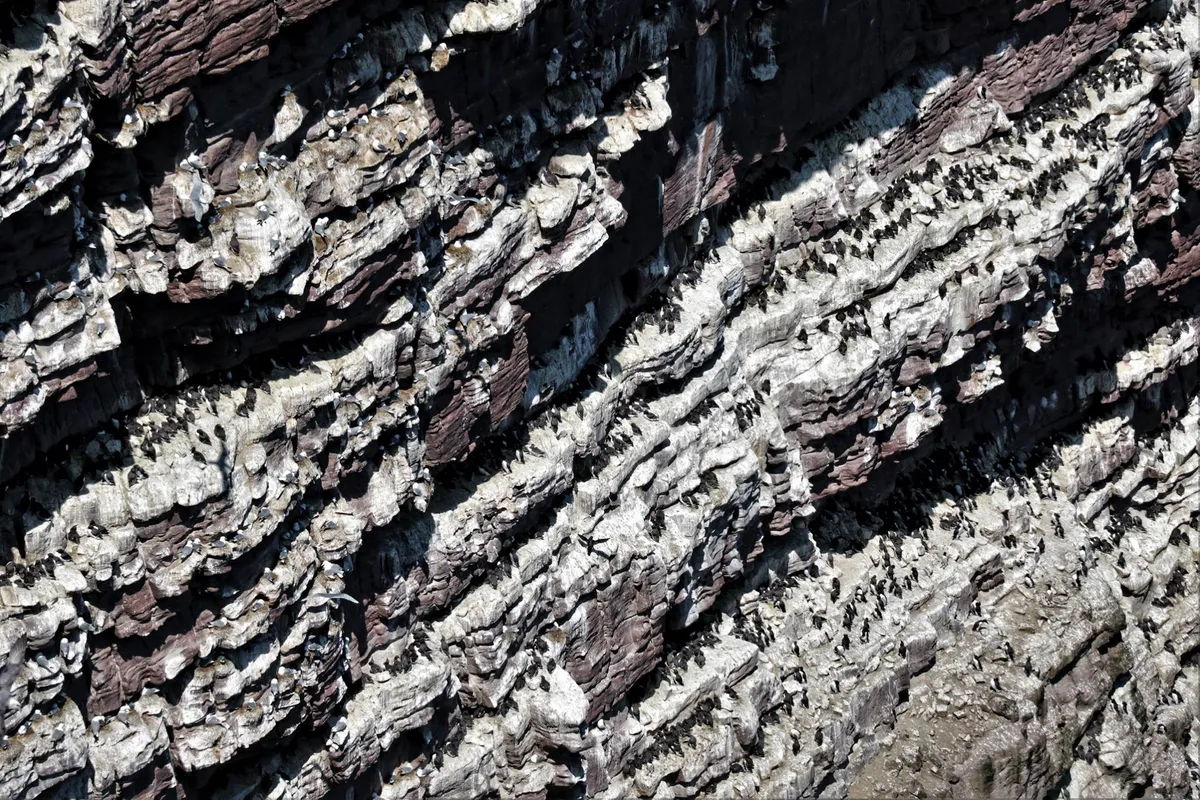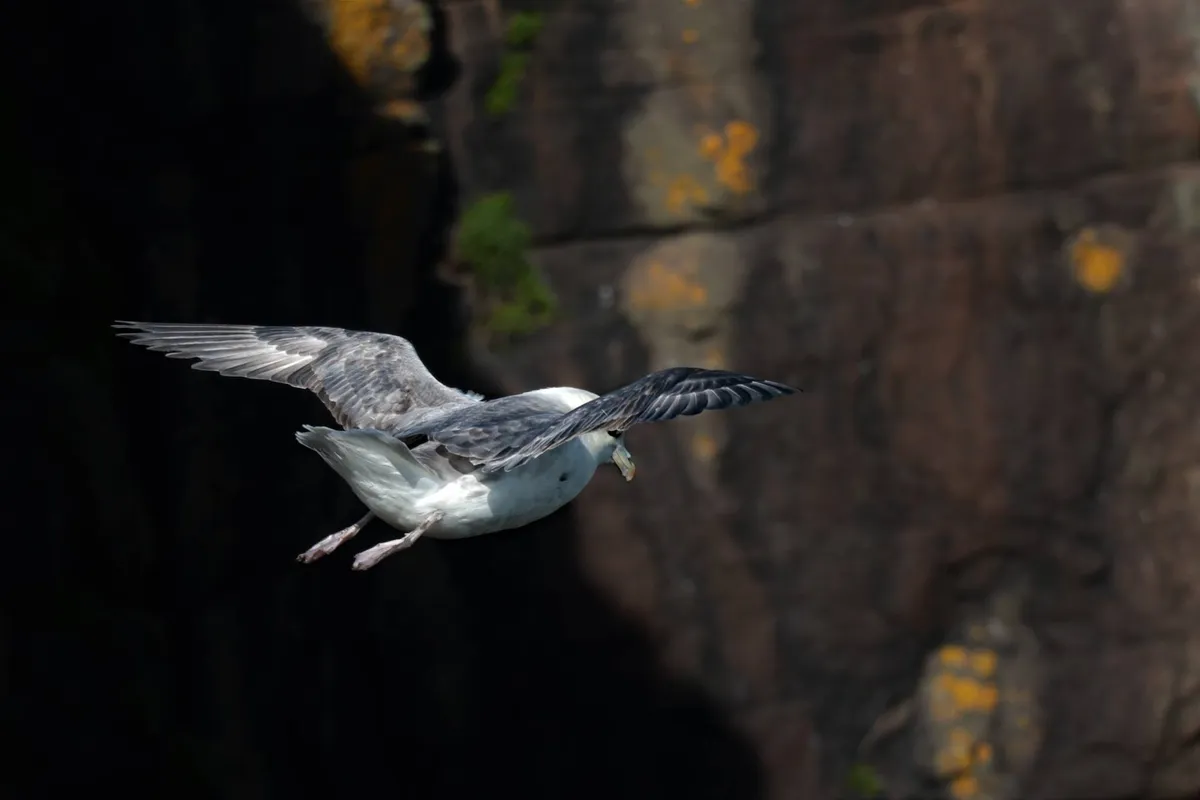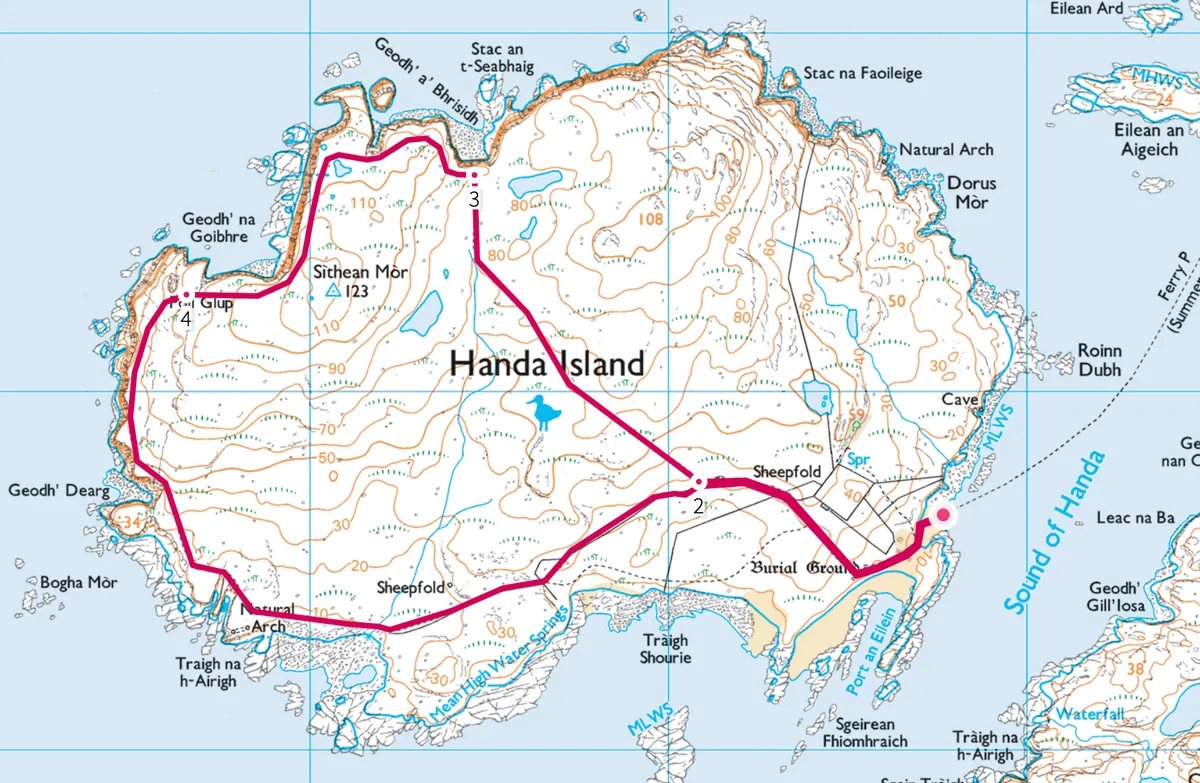A delicate roll of the finger and the binoculars waver into focus. Tangerine feet swing like windsocks beneath a stout white belly. Black-backed and wings pulsing, the puffin sways left, then right, raises its legs and crashes into a cushion of yellow-green grass and pink nodding thrift.
Lost amid the heather for a few short moments, a squat, lumbering figure suddenly appears, its red and yellow deltoid beak and plump jowls accentuating a bashful, kohl-eyed expression.

At first glance, puffins appear ill-equipped for a life among the harsh climes of the North Atlantic Ocean. Yet, in truth, few creatures are better suited. Beating their wings 400 times a minute, they are able to reach speeds of 80mph – making short work of their lengthy, ocean-wide migrations – while sharp claws offer a tool for digging deep burrows in the cliffs where they raise their young.
Living on a diet of sand eels, herring and hake, puffins – also known as sea parrots – have evolved to be proficient swimmers, too, and their short wings and powerful breast muscles allow them to dive up to 60m beneath the sea’s swell in search of food. These often-misconceived birds truly are masters of land, sky and sea.
It’s spring, and the teetering cliff tops of Handa Island in Scotland’s remote north-west are a sanctuary for seabirds. Guillemots, razorbills, kittiwakes, fulmars and Arctic terns nest alongside the puffins and, by summer, the island reverberates with the sound of 100,000 breeding seabirds, one of north-west Europe’s largest colonies.

In the warmer months, a small passenger ferry (07780967800) runs daily from Tarbet on the mainland across the Sound of Handa to the ivory-white beaches of Port an Eilean and Traigh an Teampaill on the island’s eastern shores.
On a calm day, the gunmetal dorsal fins of minke whales, basking sharks and common dolphins may be seen cleaving the deep-blue waters of the strait, while closer to shore, grey seals – hides mottled like storm clouds – exult among blankets of shining emerald seaweed.
Not far from the landing site, the Scottish Wildlife Trust’s visitor centre – a modest stone building, crammed with animal bones, old ID books and binoculars for hire – is the perfect starting point for a circular walk around the island.

Handa Island walk
4 miles | 3 hours | easy-moderate
1. High plateau
A designated footpath leaves the shelter to the north-west, passing the remains of an old village last inhabited in 1847, before gradually rising on to a grassland plateau, dimpled with the burrows of nesting birds. Great skuas – or bonxies – flash overhead, robbing unwitting neighbours of their latest catch. A garden tiger moth flutters from within a bank of blooming heather, startled by the flicked tailed of a common lizard or the cooling shadow of a passing cloud.

2. Stack of life
You’ll soon reach Puffin Bay, a crumbling crescent of 100m-high Torridonian sandstone cliffs, before veering west along the coast to reach Great Stack. Set adrift from the main island, this tottering tower of rock is home to a huge concentration of seabirds. Guillemots jostle for position on the guano-stained rocks, their scent acrid, and, far below, rafts of auks ride the stack’s surrounding swells.

3. Animal aquatic
Continue along the path to reach the collapsed cave of Poll Ghlup, looking out across the Atlantic for surfacing cetaceans. The way bends south, gradually descending to Boulder Bay, where quiet footsteps may reward you with a glimpse of an elusive island otter.
As you return to the landing beach, take a moment to revel in the seclusion and wild bliss of this remote Scottish haven.
Handa Island map
Handa Island walking route and map

